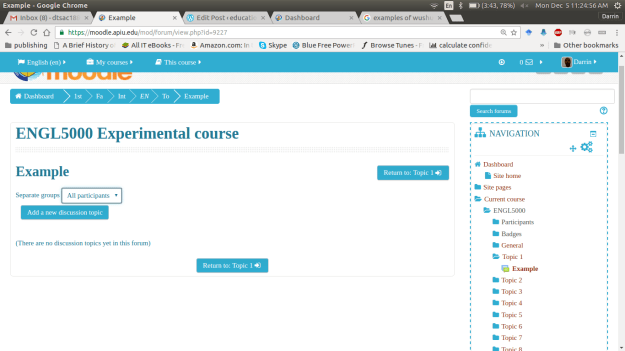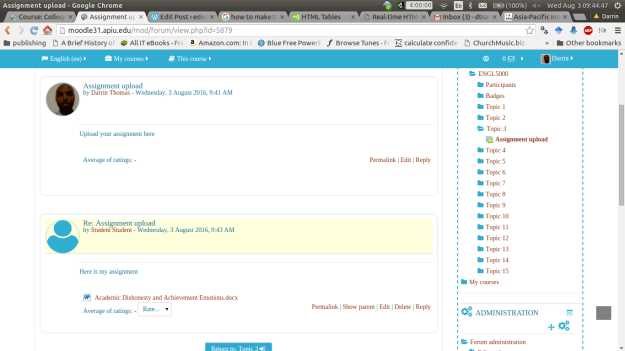Making groups and groupings are two features in Moodle that can be used for collaboration and or for organizational purposes in a class. This post will provide examples of how to use groups in an activity in Moodle
Using Groups/Groupings in a Forum
Groups and Groupings can be used in a Forum in order to allow groups to interact during a discussion topic. It is assumed that you already know how to make a forum in Moodle. Therefore, the instruction in this post will start from the settings window for forums in Moodle.
- The option that we need to adjust to use groups in forums is the “Common Module Settings”. If you click on this, you will see the following.

2. Depending on your goals there are several different ways that groups can be used.
- Group mode can be set to visible or separate groups. If groups are visible different groups can see each others discussion but they can only post in their own groups discussion.
- If separate group is selected. Groups will only be able to see their own group’s discussion and no other.
- If the grouping feature is used. Only the groups that are a part of that grouping are added to the forum. The group mode determines if the groups can see each other or not.
In this example we will select group mode set to “visible groups” and groupings to “none once you click “save and display” you will see the following.

3. To see what each group said in their discussion click “all participants” and a drop down menu will be displayed that shows each group.
Using Grouping for Assignments
To use groups in assignments you repeat the steps above. In this example, we will use the grouping feature.
- The features are viewable in the picture below. I selected “separate groups” and I selected the grouping I wanted. This means only groups in the grouping will have this assignment available to them

2. Another set a features you want to set for an assignment is the “group submission settings”. The options are self-explanatory but here is what I selected.

3. Click save a display and you will see the following

The red messages just states that some people are in more than one group or not in any group. For this example, this is not a problem as I did not assign all students to a group.
Conclusion
The concepts presented here for forums and assignments apply to most activities involving groups in Moodle. Group is very useful for large classes in which students need a space in which they can having meaningful communication with a handful of peers.
















 2. After clicking “add”, you need to give the database a name and if you want, a description. The options are mostly familiar except for “entries”. The “entries”” options allows you to control when an entry is viewable. Below is a picture of the database.
2. After clicking “add”, you need to give the database a name and if you want, a description. The options are mostly familiar except for “entries”. The “entries”” options allows you to control when an entry is viewable. Below is a picture of the database.
















 3. For the grade option consider the following
3. For the grade option consider the following
 5. The next page shows the attendance there are five different views
5. The next page shows the attendance there are five different views



 8. To check a students attendance do the following
8. To check a students attendance do the following 9. If a students attendance is not acceptable and you want to send a message through moodle do the following
9. If a students attendance is not acceptable and you want to send a message through moodle do the following
 11. To check the attendance of a student in their other classes that use this module do the following
11. To check the attendance of a student in their other classes that use this module do the following







































































 4. There should be some default settings already visible. We want to changes these so we need to click on the “edit” link.
4. There should be some default settings already visible. We want to changes these so we need to click on the “edit” link.


